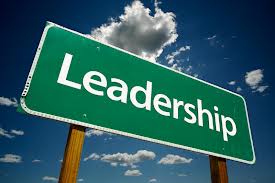 In the Ketchum Leadership Communication Monitor’s 2013 findings, people point to the #1 trait most associated with effective leadership as open transparent communication. However, when they rate current leaders, only 28% find this to be happening in practice. Given our world’s ever-accelerating pace of change and increasing complexity, often referred to as VUCA – conditions characterized by Volatility, Uncertainty, Complexity and Ambiguity – it’s becoming a necessity for leaders to communicate with absolute clarity.
In the Ketchum Leadership Communication Monitor’s 2013 findings, people point to the #1 trait most associated with effective leadership as open transparent communication. However, when they rate current leaders, only 28% find this to be happening in practice. Given our world’s ever-accelerating pace of change and increasing complexity, often referred to as VUCA – conditions characterized by Volatility, Uncertainty, Complexity and Ambiguity – it’s becoming a necessity for leaders to communicate with absolute clarity.
KLCM findings show our current leaders communicate too little, with fuzziness, and further complicate it by not walking their talk, resulting in terribly low ratings. What can you do?
First, communicate with extreme clarity. Don’t give in to the temptation to be comprehensive and explore all the factors involved, and the tradeoffs needed, etc. etc. Instead, meet the need of the people you are leading and condense the message into a clear, simple statement. Now, this does not mean dumbing it down, instead it means finding the deeper underlying cause that needs articulation. A relevant quote: “I wouldn’t give a fig for simplicity this side of complexity, but I’d give my life for simplicity the other side of complexity.” (Oliver Wendell Holmes).
Second, walk your talk. If you can’t behave in alignment with what you are saying, it’s better not to say it. Current technology means everything is watched and commented upon – your employees will be tweeting tonight your failure today to behave in alignment with the goals you articulated.
Support for KLCM’s Leadership Response comes from Bob Johansen, Senior Fellow of the Institute for the Future, in his book Leaders Make the Future, with the following suggested leadership skills:
- dilemma flipping: the ability to turn dilemmas into advantages and opportunities
- immersive learning ability: to learn deeply first person from environments you are in
- commons creating: the ability to seed and grow assets beneficial to all concerned
Indeed, our KLCM research found that in line with Mr. Johnasen’s work, the No.1 ‘emerging’ leadership attribute likely to grow in importance over the next decade is the ability to build and inspire teams who, together, will shape the future – another sign that the era of the heroic, solitary, muscular leaders may have had its day.
Given our current hectic world conditions, meet the need of people with extremely clear simplified communications that you commit to enacting in your own behavior. Otherwise, you may end up somewhere else.
Photo credit: ruraldevelopmentresearch.blogspot.com


